|
Another Military Group from the Watford Area. |
|
|
A Group of Officers photographed by W. Coles of Watford  |
|
|
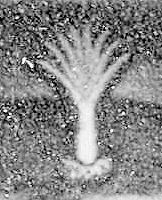 |
| Coldstream Guards | Welsh Guards | ||
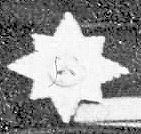 |
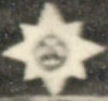 |
||
| Irish Guards | |||
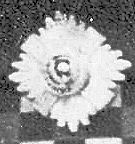 |
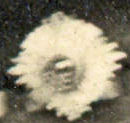 |
||
| Scots Guards | |||
 |
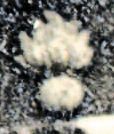 |
||
| Grenadier Guards | |||
September 2015 update
Dave Gobbitt writes: Having chanced upon your appeal for help I checked a couple of reference books and am now confident that all the officers are Guardsmen, whose breast pockets typically have no pleats. I think the second pair of cap badges shown in your enlarged images belong to Irish Guards (shamrock on a darker diagonal cross), the third pair Scots Guards (thistle; confirmed by the chequered hat bands) and the last pair Grenadier Guards (grenade). They can also be distinguished by the buttons on their tunics, as described by Neil Storey in his 2009 book, Military Photographs & How to Date Them (p. 64):
"With the exception of the oldest of all the Guards battalions (the Grenadiers), rather than being evenly spaced, Guards buttons are grouped: Coldstreams in twos, Scots in threes … Irish in fours and Welsh (formed 1915) in groups of five."
Most of the officers appear to be captains, designated by three stars on their shoulder straps (in addition to a button at the end near the collar). Some of them have wound stripes (short bars on the lower left sleeve), which were introduced in July 1916 for those wounded since the start of the war. The man at the centre of the front row (the position normally occupied by the senior officer) could be a Lieutenant Colonel, if his insignia are a star and a crown.
I suspect they had gathered for a training exercise, like the one mentioned briefly by the Huddersfield Daily Examiner in June 1916, when Lord French inspected the recruits of the Grenadier, Coldstream, Scots, Irish and Welsh Guards at Caterham, Surrey. Other press reports reveal that the Guards regiments used to train there regularly, perhaps more frequently as the war went on.
If there were no cedar trees at the Caterham training camp, it may be worth investigating The Grove (see http://www.geograph.org.uk/photo/1647966 and https://en.wikipedia.org/wiki/The_Grove,_Watford). It would certainly have been closer to home for the photographer, William Coles of Watford, although I have found no reference to it in the newspapers accessible through Findmypast.
The identification seems fine and I had not noticed the arrangement of the buttons which are clearly in groups when you click on the enlarged version of the picture.
I don't think the cedar is the one in the picture near the Grove as the latter is in a large meadow area with a distinct grazing line caused by cattle, while the one with the soldiers is probably in a garden area with what looks like a low garden wall to the left and some buildings behind the soldiers to the right. The much larger Cassiobury Park had at least one cedar, as there was a news item about in in 2013.
At the moment the British Newspaper archive does not adequately cover Watford newspapers during the First World War. Even when the gap is filled there could still be a problem because of censorship. Censorship greatly affected what I could find in the local papers when I wrote the book "The London Gunners come to Town" in 1995.
When war broke out an illustrated newspaper, the Watford Illustrated, was published with pages of named battalions marching to their war locations - but as the war progressed it was able to published less and less detail and ended up with pictures such as "a soldier learning judo" shortly before the paper closed altogether. Other local papers may have kept publishing but became useless for deciding which military units were in town. In fact what was clear was that what a local newspaper could publish seemed to depend on the whim of the local army censor. When the first zeppelin crashed in flames in Hertfordshire one local paper had one short related item which said little more than something happened which we can't tell you about. At the same time another paper less than 10 miles away printed half a page describing what happened (admittedly in an unnamed but easy to guess Hertfordshire town) in considerable detail.
| November 2011 | Page created | |
| September 2015 | Observations by David Gobbitt |